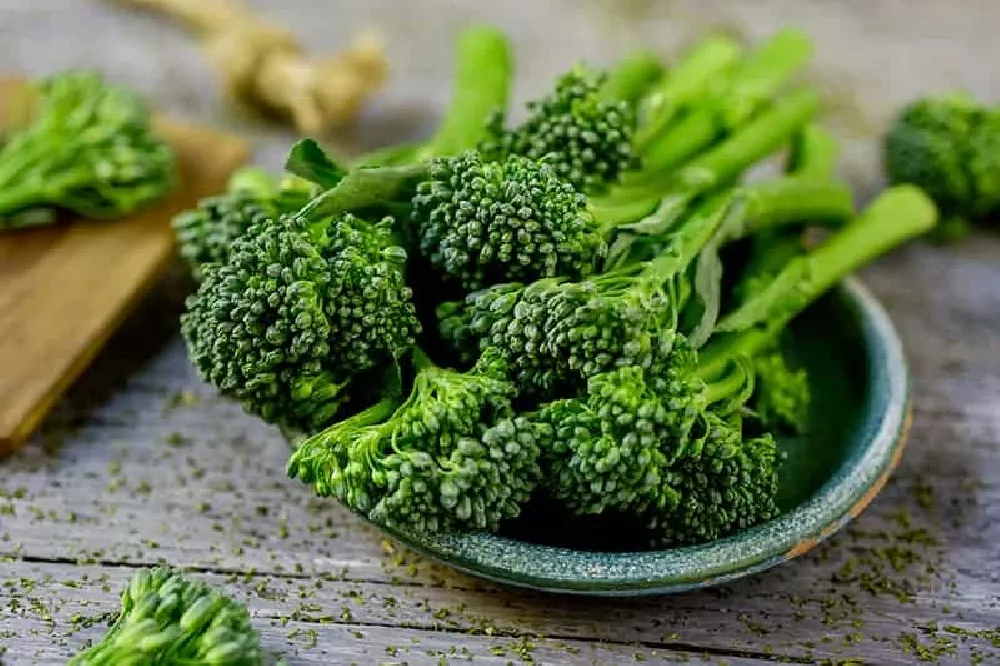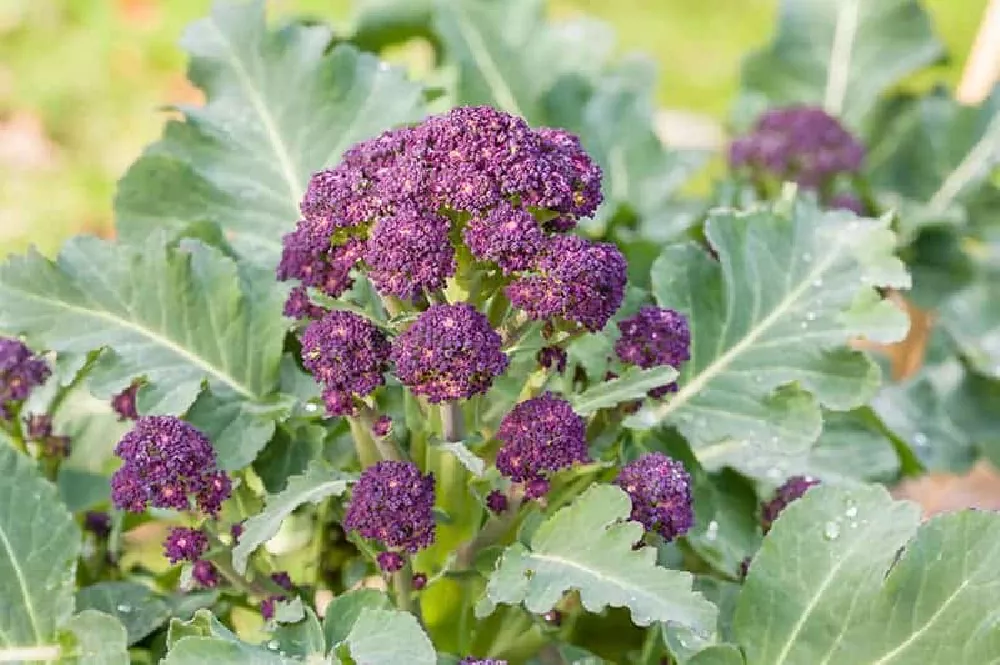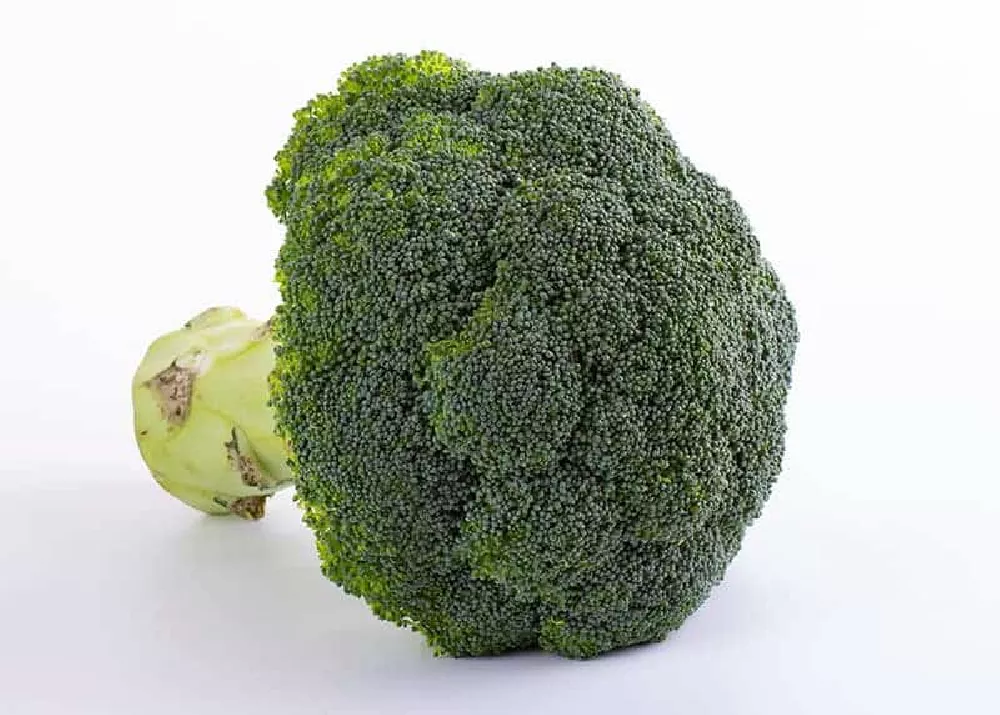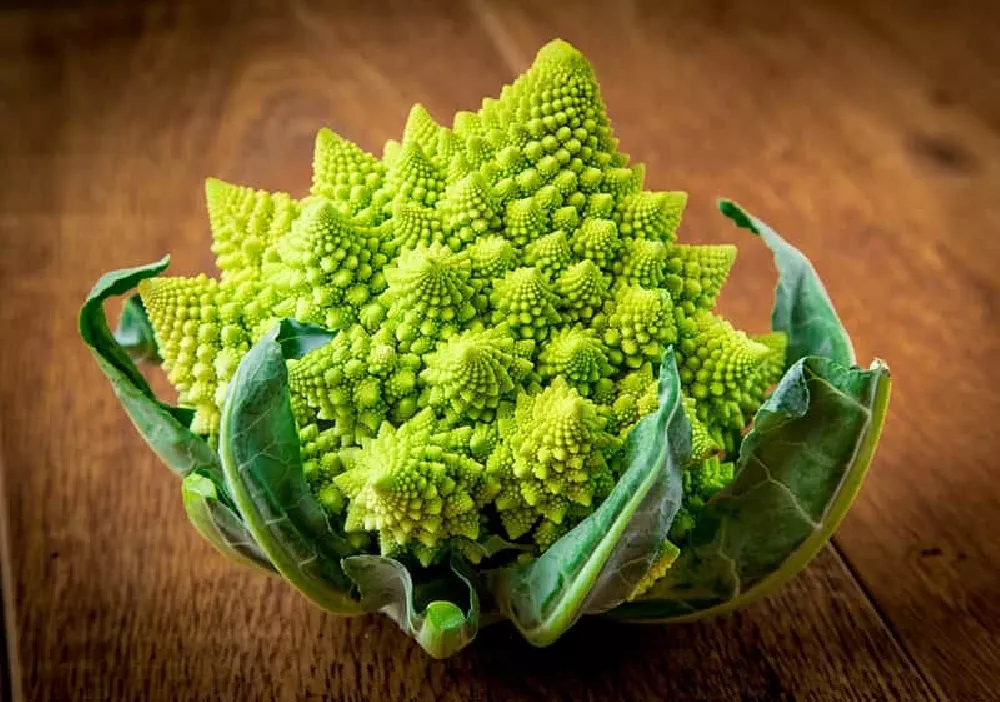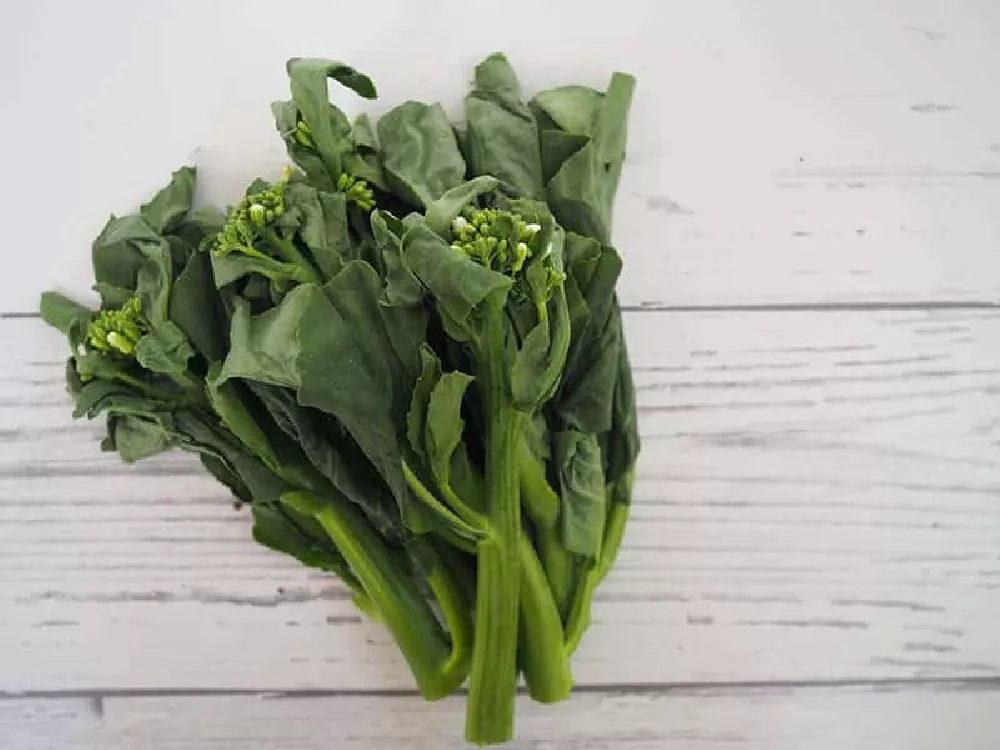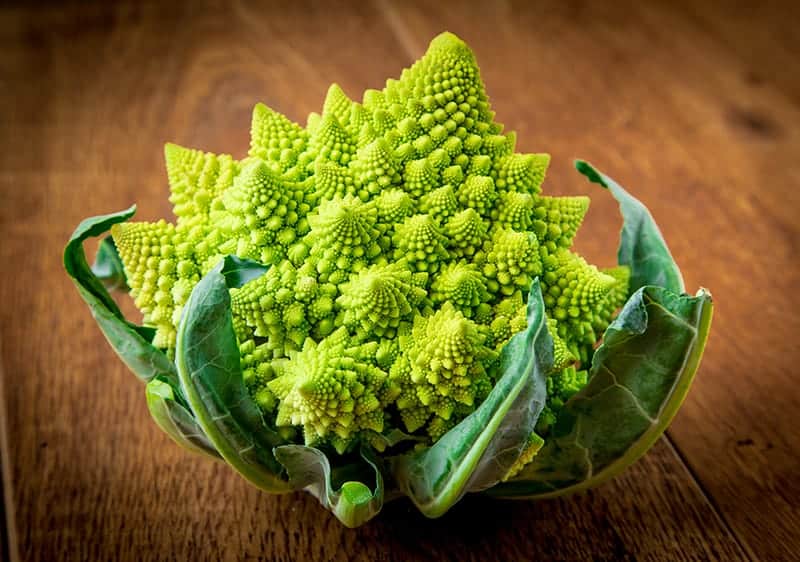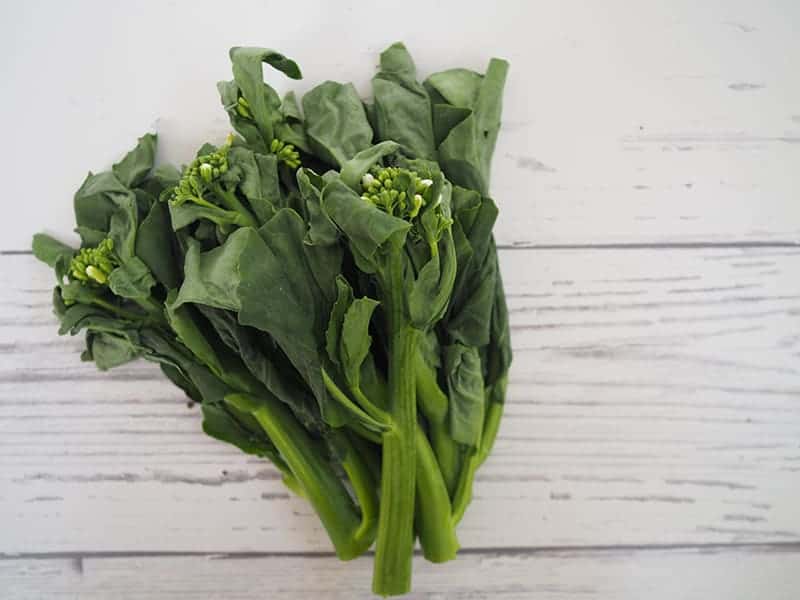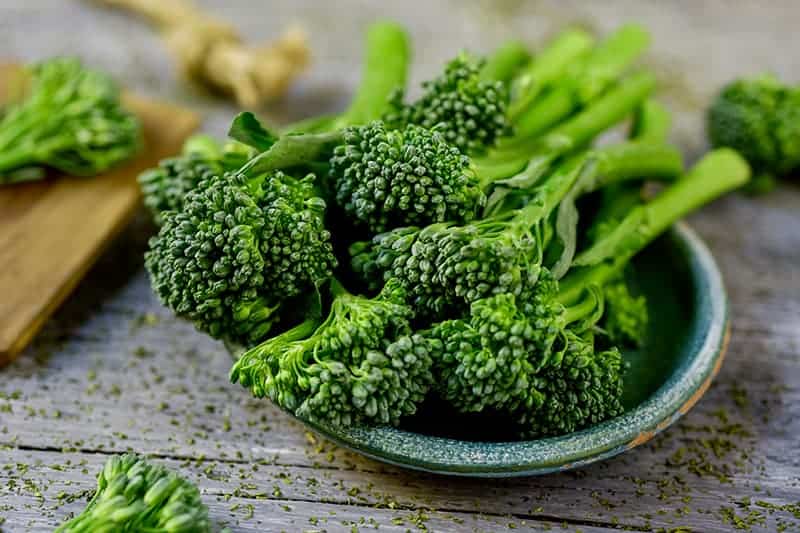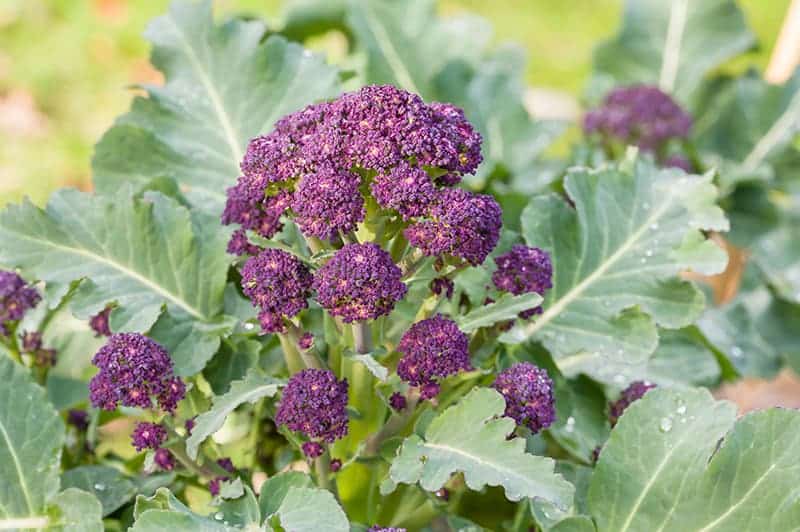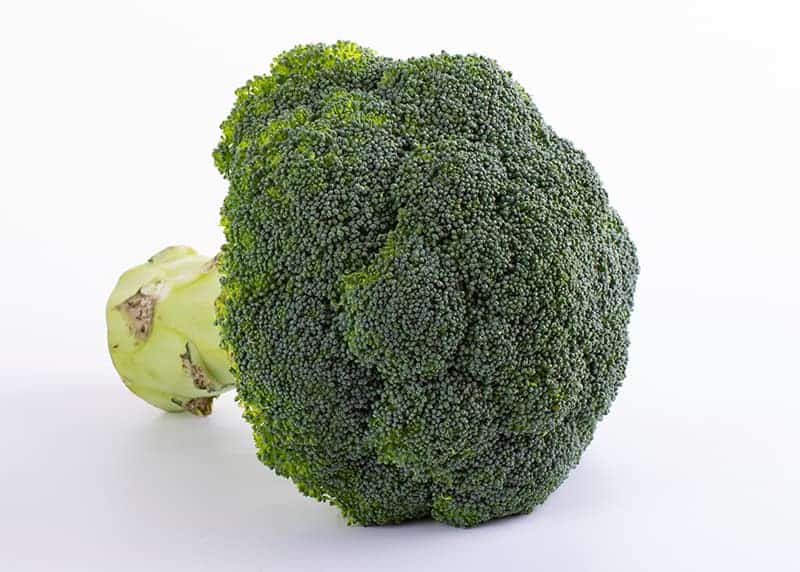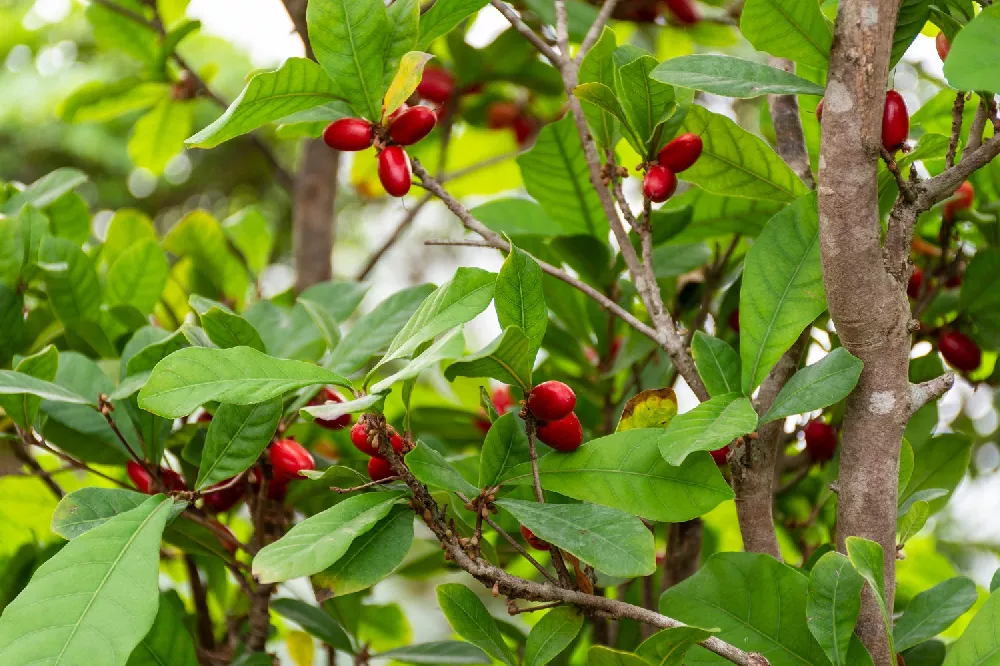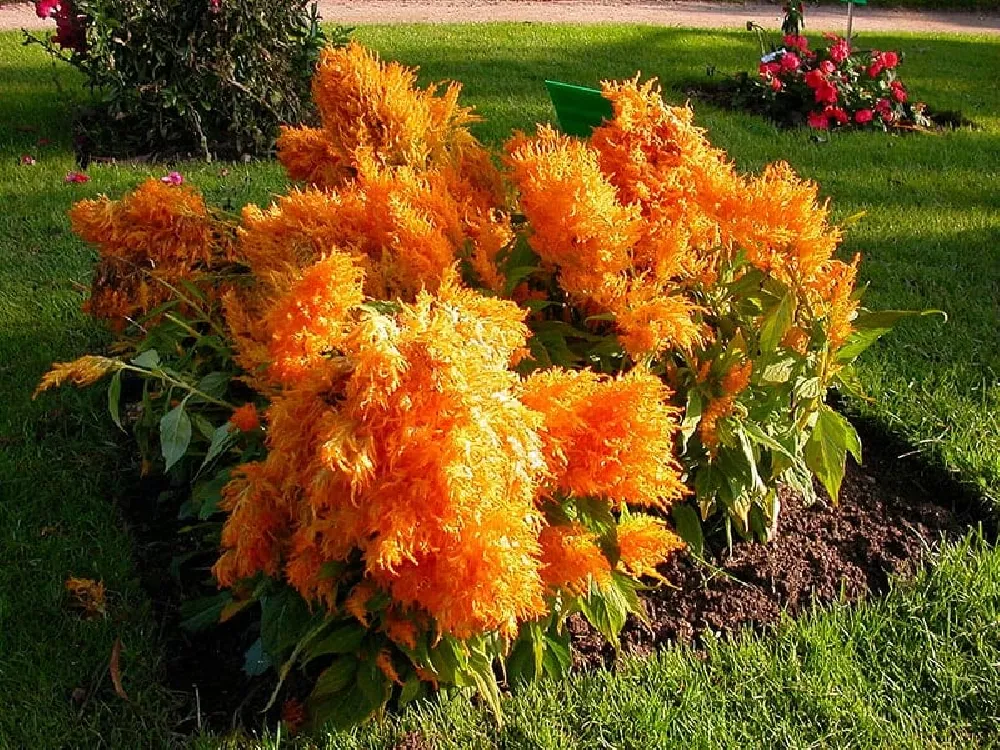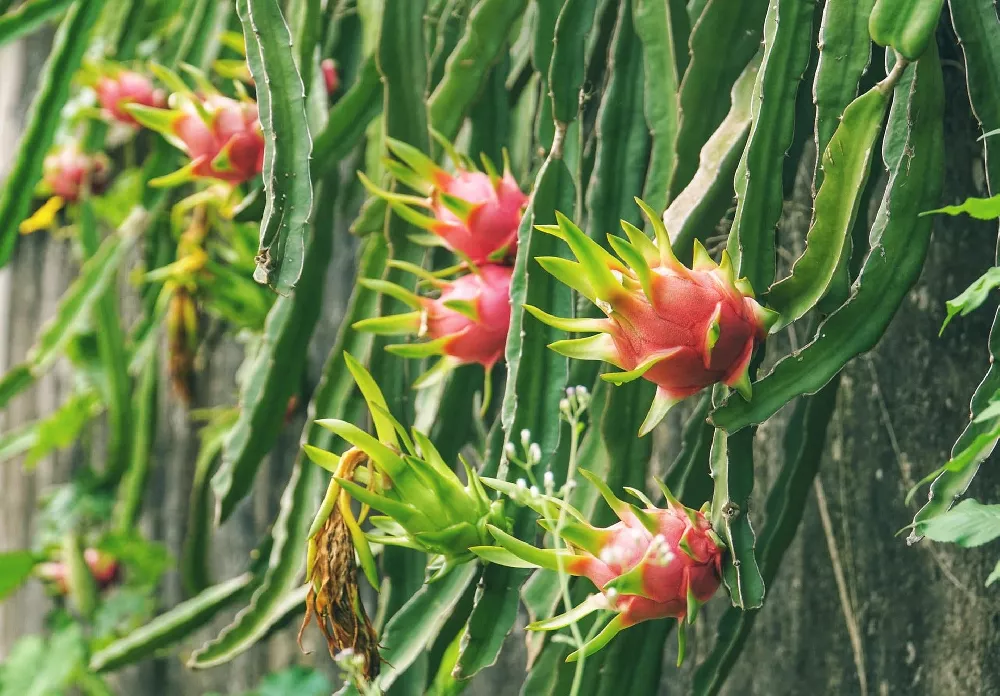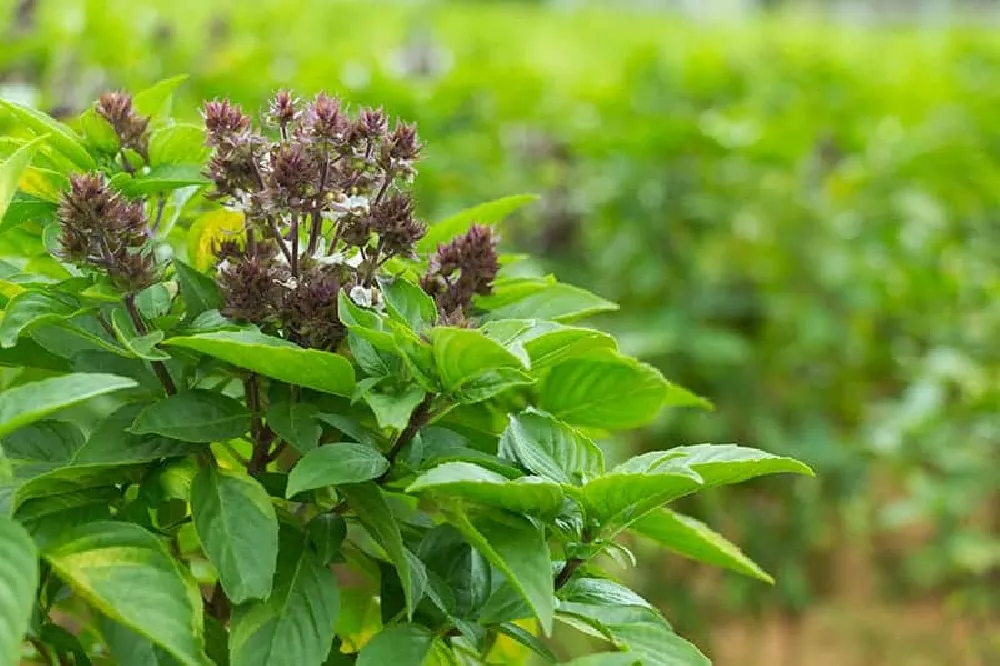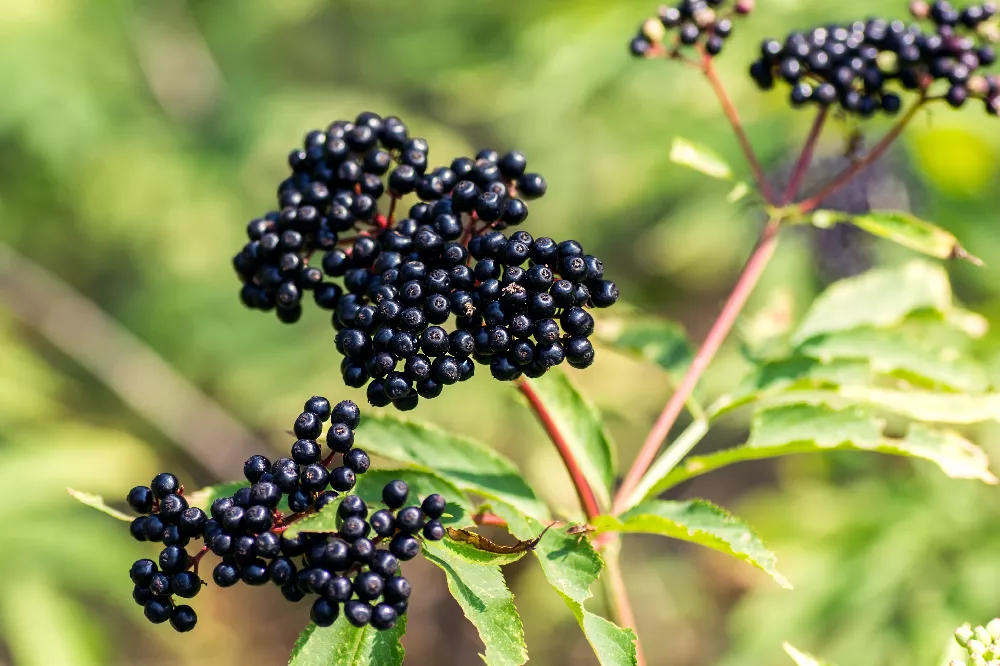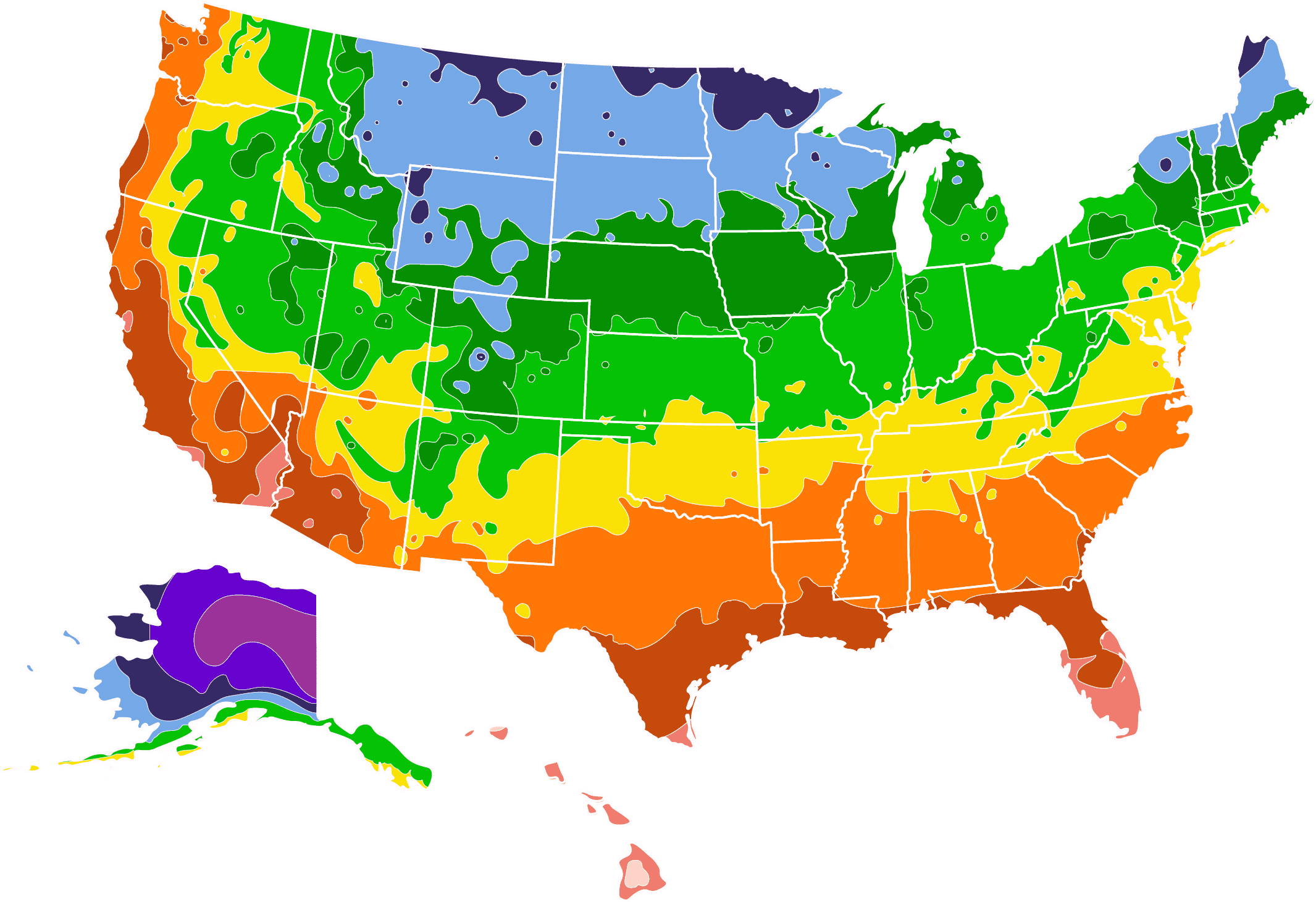Broccoli Plants for Sale - Buying & Growing Guide
Broccoli is a plant that produces vegetables and is part of the Brassica family, which also includes cabbage and cauliflower. They are a cool climate crop and are easy to grow. Discover the different types of broccoli you could grow in your garden.
Broccoli Plant Varieties
1. Romanesco Broccoli
Scientific Name: Brassica oleracea var. Botrytis
Mature Size: Up to 2 feet across
USDA Hardiness Zone: 3-10
Light: Full sun
Water: Maintain moist soil
Soil: Well-draining, organically rich
Cultivars and Varieties: Orbit, Veronica, Puntoverde
This is an heirloom type of broccoli that was first documented in Italy in the 1500s, and it has been growing there ever since. It is also commonly known as the Romanesco cauliflower or Broccolo Romanesco. The vegetable part of this plant is actually an edible flower bud, and it has a striking appearance, which is a shade of yellow-green that lays somewhere between lime and chartreuse. The Romanesco broccoli has a highly unusual look, with a distinctively textured surface made up of uneven neon spiraling spikes. It provides an interesting talking point, both in the garden and also on a dinner plate.
Romanesco broccoli is not just visually fascinating; it’s also tasty and has a good mix of nutrients. Romanesco broccoli, though it resembles cauliflower, does not taste anything like it. The flavor of this vegetable is mild and nutty, and you can use it in place of regular broccoli in almost any dish. It works well when steamed or grilled, or can also be eaten raw in a salad or with dip. It is rich in both vitamin C and vitamin K, as well as fiber.
This plant has a similar growth pattern to cauliflower, growing out sideways and surrounded by thick, coarse foliage. These plants grow to around two feet in width, so they need plenty of space in the vegetable garden, and should be planted in rows spaced at three feet apart. They also need plenty of nutrients to thrive, so giving them adequate space will help to ensure they aren’t competing against other plants for nutrients in the soil. If you are planting these from seed, you can sow them inside around eight weeks before the last frost in order to get a head start, and then plant them outside.
Romanesco broccoli likes a well-draining soil with plenty of organic material, so consider mixing some organic compost in with your soil before planting. Once planted, keep the soil watered regularly, aiming to ensure it is consistently moist but not wet. You should regularly weed the area around the seedlings to keep competitive weeds from taking over. These plants are quite hardy, and in regions with mild winters, they can keep growing right through fall. However, these plants do not enjoy high temperatures, and in very hot climates can bolt. Romanesco broccoli can take some patience to grow, as most varieties take over 70 days to reach maturity and become suitable for harvesting.
2. Chinese Broccoli
Scientific Name: Brassica oleracea var. alboglabra
Mature Size: Up to 1.5 foot tall
USDA Hardiness Zone: 3-11
Light: Full sun
Water: Maintain moist soil
Soil: Well-draining, organically rich
Flower Color: Yellow and white
Cultivars and Varieties: Crispy Blue, Noble Jade, Big Boy, Blue Wonder
Chinese broccoli, as you might expect, originates from China, and is also commonly known as Chinese kale. Its Cantonese name is gai lan. This vegetable looks like a cross between broccoli and kale. It is a large leafy vegetable with chunky stalks and broccoli-like florets that are smaller than typical broccoli. The taste of Chinese broccoli is similar to broccoli, but with a stronger flavor, and it is slightly more bitter. It is a common feature of Cantonese cooking and is frequently used in stir-fries or steamed and added as an accompaniment to dishes. You could substitute out regular broccoli for Chinese broccoli in almost any recipe, and in fact, if you are cooking a Chinese recipe that calls for broccoli, then it was probably originally intended to have Chinese broccoli in it.
As well as being delicious, Chinese broccoli is also very good for you and full of healthy nutrients. It is high in calcium and folic acid, and also contains high levels of vitamin A, vitamin K, and vitamin C.
Most types of Chinese broccoli produce white flowers, and it is shortly after these flowers appear that you should harvest the plant. If you wait much longer after the arrival of blooms, then the vegetable can become woody and not as pleasant tasting. There are also some types of Chinese broccoli that have yellow flowers, though these are less common. The two types have slightly different growing habits, though they enjoy the same care. Yellow-flowering varieties are smaller, growing to a maximum of around one foot tall, whereas white-flowering varieties are slightly wider at one and a half feet in height.
This vegetable prefers cool climates, though some varieties are heat-tolerant. In the lower USDA hardiness zones, grow this plant in the spring and summer, ready to harvest it in the fall. In milder climates, you could grow this vegetable all year round. In climates where summer temperatures are too hot for Chinese broccoli to grow, and the heat causes them to bolt, this vegetable is commonly planted at the end of summer when temperatures are starting to ease off, and the plant can be harvested late into winter.
These plants enjoy full sun and well-draining soil with a good percentage of organic content. Their soil should be kept moist, and it is a good idea to mulch over the soil to help keep the plant roots cool and prevent moisture from evaporating too quickly. Compared to other types of broccoli, Chinese broccoli falls somewhere in the middle when it comes to the length of time it takes for the vegetable to be ready to harvest. Some varieties of Chinese broccoli are ready to remove from the plant in as little as 35 days, while others can take up to 60 days.
3. Broccolini
Scientific Name: Brassica oleracea var. italica × alboglabra
Mature Size: Up to 2.5 feet tall
USDA Hardiness Zone: 4-11
Light: Full sun
Water: Maintain moist soil
Soil: Well-draining, neutral to acidic
Cultivars and Varieties: Atlantis, Aspabroc
This vegetable is a hybrid that results from crossing common broccoli with Chinese broccoli. It was first developed in 1993 and is a natural hybrid rather than a genetically modified hybrid. It is sometimes referred to as baby broccoli or tenderstem broccoli and has been rapidly growing in popularity over the last few years. Broccolini is seen by most people as a more refined alternative to broccoli, and in many modern restaurants or fine dining establishments, you will see that regular broccoli has been replaced with broccolini on their menus. Visually, it looks like a smaller and elongated version of broccoli. It has petite, dainty florets at the top of long and slender stems.
Taste-wise, it is very similar to broccoli, with a slightly sweeter flavor. The stems are less woody than ordinary broccoli and are commonly used in stir-fries or steamed or grilled as a side dish. It is a low-calorie vegetable, which is high in vitamin C. It also has good levels of calcium, iron, vitamin A and vitamin E. In terms of care, broccolini has similar requirements to other types of broccoli, as they are both cool weather vegetables.
The main difference is regarding temperatures, as broccolini is more tolerant of heat and so less likely to bolt in high temperatures. However, it is less tolerant of the cold, and therefore less hardy than typical broccoli. Broccolini should be sown from seed indoors to get a head start on the growing season Depending on when you would like to harvest your broccolini, and the climate you live in, you can sow these seeds indoors in early spring or early fall. At around six weeks of age, the seedlings can be planted outside. They should be at an eventual distance of two feet from each other, as these plants can grow to be quite large.
Broccolini thrives in neutral or slightly acidic soil, ideally with a pH of between 6.0 and 7.0. This plant needs plenty of moisture to thrive, so aim for a soil that is kept consistently moist. Ensure the soil is well-draining to avoid root rot. Broccolini can take anywhere from 25 to 60 days to mature, depending on the variety and the growing conditions. When harvesting the broccolini, you should remove the stalks, and the plant will produce a further harvest.
4. Sprouting Broccoli
Scientific Name: Brassica oleracea var. italica
Mature Size: Up to 3 feet tall
USDA Hardiness Zone: 3-10
Light: Full sun to partial shade
Water: Maintain moist soil
Soil: Well-draining
Flower Color: Yellow
Cultivars and Varieties: Burgundy, Red Fire, White Sprouting Broccoli
Sprouting broccoli produces slender stalks with individual sprouting heads. Different varieties of sprouting broccoli produce sprouts that are flushed with different colors; the most popular varieties are those that have purple or white sprouting heads. This type of broccoli can be eaten raw, though it is most commonly cooked. Unfortunately, the unusual colors of the vegetable will ordinarily turn green once cooked, so if you want to make a statement with the colorful heads of sprouting broccoli, then you will need to enjoy them in a salad or other cold dish. Sprouting broccoli tastes much the same as typical broccoli, with a barely noticeable, more bitter flavor.
Sprouting broccoli can be quite an effort to grow, as it is most commonly overwintered for an early spring harvest, which can be a big commitment in terms of time. Most gardeners with experience in growing sprouting broccoli recommend that you sow it inside in early spring, then transplant the seedlings outside during early summer. These plants will continue to grow throughout the winter and need a minimum of six weeks of cold temperatures that are lower than 50° F in order to produce their florets.
Sprouting broccoli can take anywhere from 70 days to 220 days to be ready to harvest, with white sprouting broccoli presenting the longest time commitment. These plants need plenty of water to thrive, so plant them in well-draining soil, and during the summer, you may need to water them as often as twice a day. Sprouting broccoli will usually be ready to harvest in February, and if you cut the stalks off, it can continue to produce more sprouting broccoli right through to May. You will need to ensure you harvest this type of broccoli at the right time; if it starts to produce yellow flowers, then you have allowed it to grow for too long.
5. Typical Broccoli
Scientific Name: Brassica oleracea var. italica
Mature Size: Up to 3 feet tall
USDA Hardiness Zone: 3-10
Light: Full sun
Water: Maintain moist soil
Soil: Well-draining, fertile
Cultivars and Varieties: Calabrese, Blue Wind, Destiny
This is the type of broccoli that most people visualize when they think of broccoli. It is the chunky stemmed vegetable with wide clumps of tiny florets, which looks like a miniature version of a tree. The most popular variety of typical broccoli is ‘Calabrese,’ and this variety is so widely distributed that some people refer to typical broccoli as Calabrese broccoli. Calabrese broccoli is likely to be the type of typical broccoli you would commonly find in your grocery store. These types of broccoli can range in size, though they all have a very similar taste and almost identical care requirements.
The biggest difference between varieties is usually the length of time they take to mature to harvesting level, with some varieties being ready for harvest in 60 days, and others taking up to 90 days. Grow this broccoli in full sun in well-draining soil. It will continue to produce side shoots of broccoli after you have harvested the main stalks, so you can enjoy a long harvesting period.
